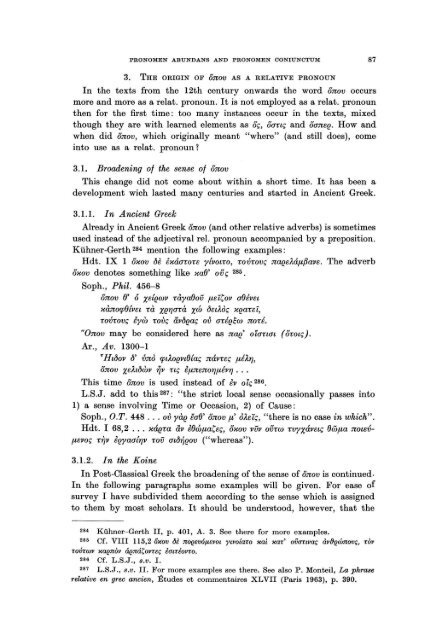Pronomen Abundans and Pronomen Coniunctum. A ... - DWC
Pronomen Abundans and Pronomen Coniunctum. A ... - DWC
Pronomen Abundans and Pronomen Coniunctum. A ... - DWC
Create successful ePaper yourself
Turn your PDF publications into a flip-book with our unique Google optimized e-Paper software.
PRONOMEN ABUNDANS AND PRONOMEN CONIUNCTUM 87<br />
3. THE ORIGIN OF O:reOV AS A RELATIVE PRONOUN<br />
In the texts from the 12th century onwards the word önov occurs<br />
more <strong>and</strong> more as arelat. pronoun. It is not employed as arelat. pronoun<br />
then for the first time: too many instances occur in the texts, mixed<br />
though they are with learned elements as oç, oanç <strong>and</strong> oa:reee. How <strong>and</strong><br />
when did önov, which originally meant "where" (<strong>and</strong> still does), come<br />
into use as arelat. pronoun?<br />
3.1. Broadening of the sense of ö:reov<br />
This change did not come about within a short time. It has been a<br />
development wich lasted many centuries <strong>and</strong> started in Ancient Greek.<br />
3.1.1. In A ncient Greek<br />
Already in Ancient Greek onov (<strong>and</strong> other relative adverbs) is sometimes<br />
used instead of the adjectival rel. pronoun accompanied by a preposition.<br />
Kühner-Gerth 284 ment ion the following ex am pies :<br />
Hdt. IX 1 ö"ov
















